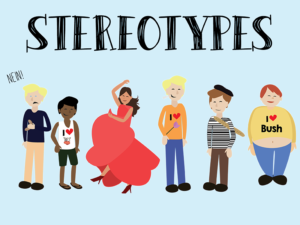
What's New In Speak - April 2024
Interested in What's New In Speak February 2024? Check out this post for all the new updates available for you in Speak today!

Picture this: You are walking down a busy street, as you look around at your surroundings. You see people walking, some in a hurry and some taking their time. You may catch a glance at them. Some will engage in eye contact, and some will not. You may attempt to give a friendly smile. Some return the greeting and some do not. The greeting or lack there of makes you perceive them as friendly or rude. You look at the street lights and the store signs. You wait until you see the green light to walk, and you make your way across the street. Every second of everyday embodies the notion of perception. Whether it is the way we view the world or the way that others view us, this process is defined by perceptive processes of the senses.





This direct correlation of behaviours and personality traits is called implicit personality theory, that is based on the assumptions that we have about the characteristics of the individual. The major aspect of perception in which social norms and roles com into play in such theory. We have certain perceived expectations when we engage with others. When these are not met there is an element of deviance associated. This process happens fast, automatically and at the subconscious level. Further allowing you to respond and make decisions quickly. This furthers your role as a social being.

Although understanding how others perceive you is beneficial under various scenarios, it is a reality that humans are not always aware of the internal perceptions that others have of them. Since no one can read minds, engaging in communication is solely based off of external sensory cues with no access to the internal perceptions that one may be experiencing during the conversation. Due to this, individuals are left to perceive themselves through the process of introspection, which is defined by looking inward to our own feelings and thoughts. A major fall back of this perception process is the misconceptions that occur while speaking. Individuals have to come to conclusions that may not always be accurate. Leaving an aspect of ignorance apparent in the conversation when a person's own morals, values and attitudes get in the way of perceiving others.

This internal perception of ourselves is vital, as the level of self-esteem we exhibit will transcend onto others. The self-actualization process will in turn affect how we come across in how we act and feel in a conversation. It is shown that as humans the more cues we have to process the less accurate our ability to perceive others is. Things essentially can get lost in translation and people could be perceiving you differently than you think- for the good or the bad. This proves that less is more. Statistics show that we accurately encode facial cues about 90% of the time. Showing that our brain capacities are better based on physical functionalities than of voice.

A reality in society is that the ideological implications of stereotypes diminish the perceptual integrity of individuals. The connotations that we have with specific social markers can allow perceptions to occur before the encoding process all together. This disallows individuals to achieve a positive characteristics when judging based on social factors that are outside of their control.




Making an assumption about someone based on the first information that is received. This is the embodiment of the first impression and how that can determine a person's overall perception by others.



When individuals put positive outcomes on internal characteristics and project blame of the negatives towards external factors.



Interested in What's New In Speak February 2024? Check out this post for all the new updates available for you in Speak today!

Interested in What's New In Speak February 2024? Check out this post for all the new updates available for you in Speak today!
We’re building technology to help you enhance your life.
Take the next step on your journey today.

Powered by Speak Ai Inc. Made in Canada with
Use Speak's powerful AI to transcribe, analyze, automate and produce incredible insights for you and your team.